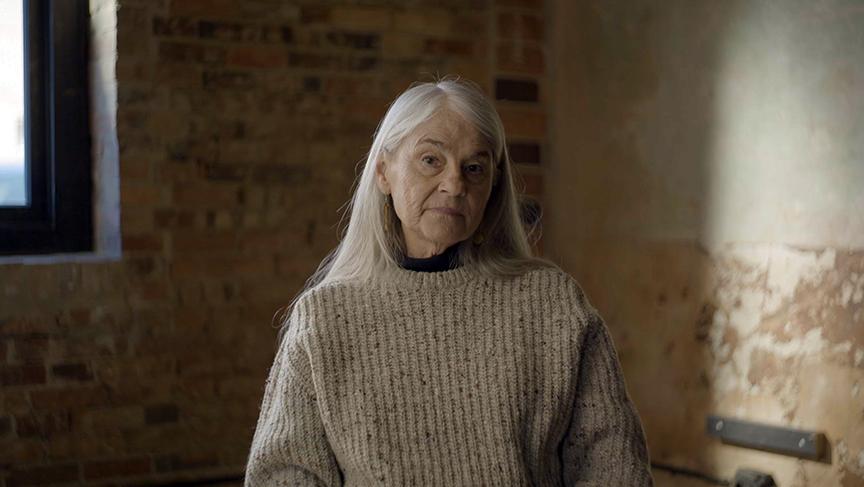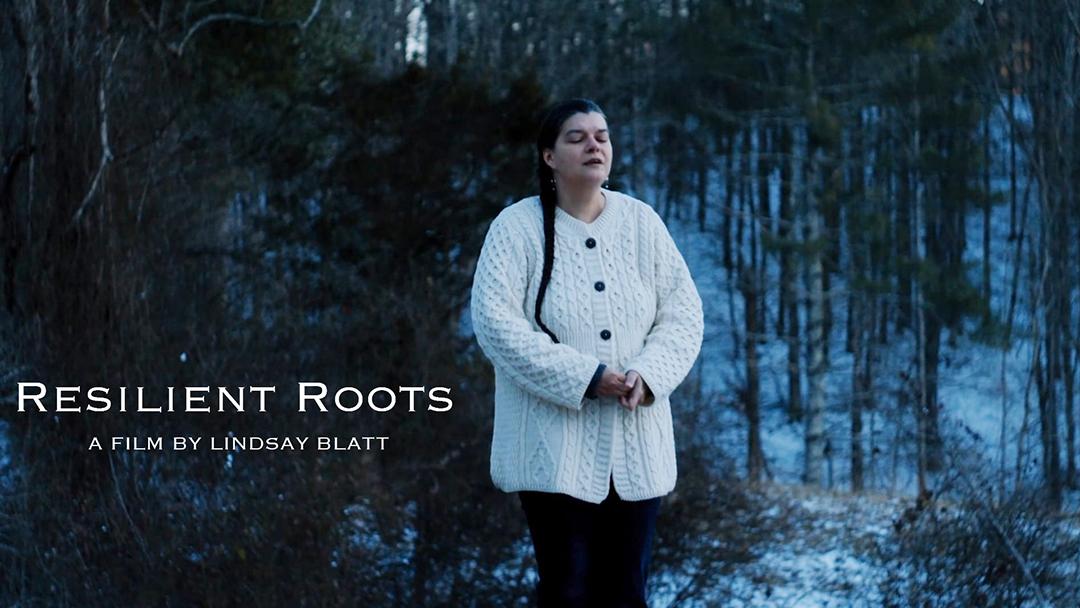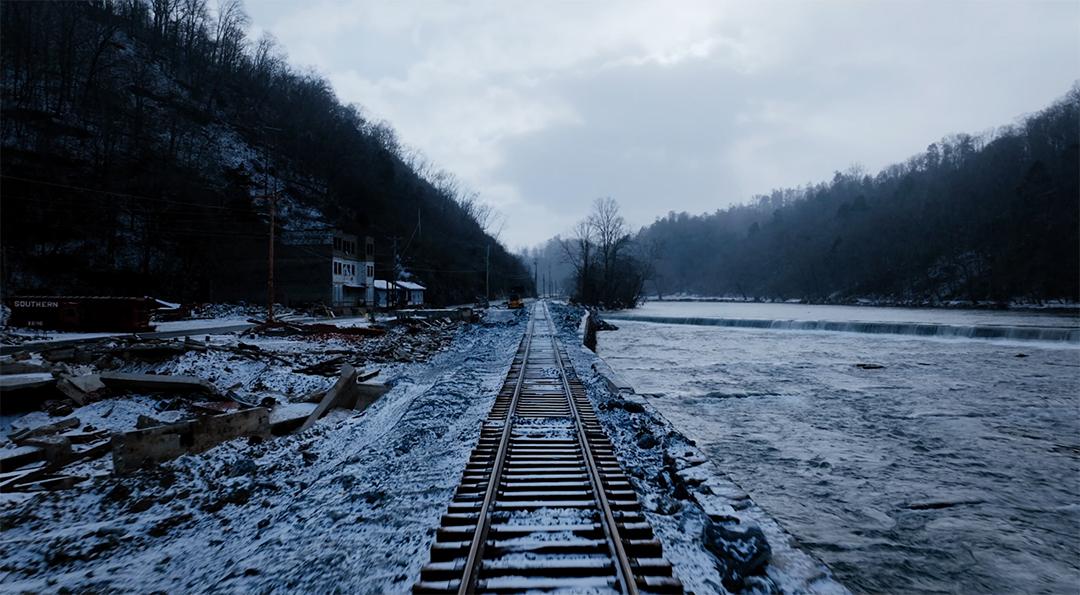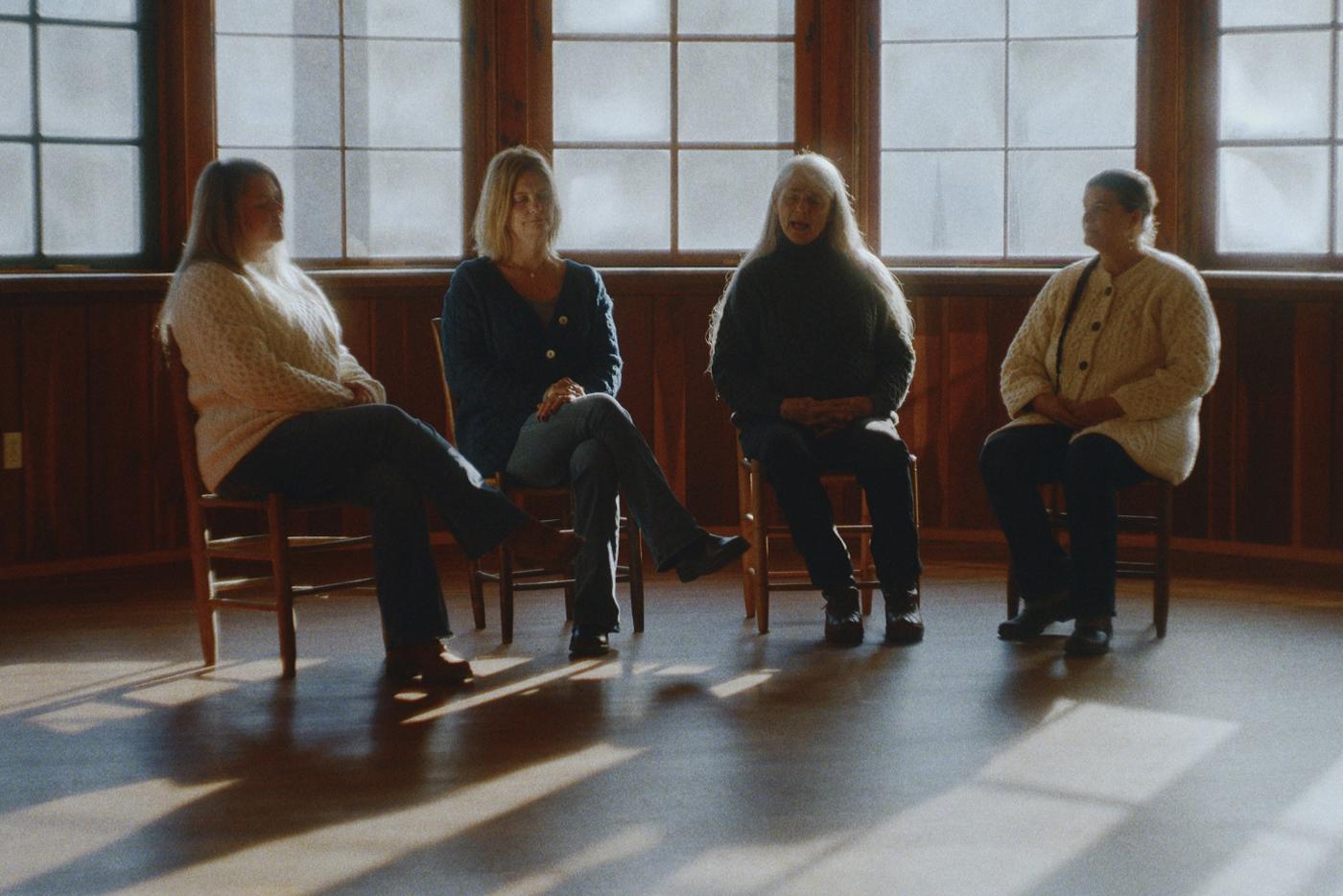Author: Andie Freeman
Header image from Resilient Roots, a film by Lindsay Blatt. Image courtesy of Lindsay Blatt.
In western North Carolina, a dedicated group of ballad singers is keeping their artform alive by sharing music with new audiences. Rooted in the folk ballads brought by early settlers from the British Isles, Appalachian ballad singing is a form of musical storytelling—often performed a cappella by a solo voice. The ballads of this region represent one of the oldest unbroken oral traditions in the United States, offering a powerful link to the past. Passed down from generation to generation, “knee to knee,” each singer adds their own nuance to the songs.
Sheila Kay Adams, a 2016 North Carolina Heritage Award honoree and National Endowment for the Arts National Heritage Fellow, has made it her life’s mission to preserve and pass on this tradition. Through her group, Nest of Singing Birds—comprising seventh- and eighth-generation ballad singers from Madison County—she continues to nurture the legacy.

The group gathers monthly for Ballad Swap nights at the Old Marshall Jail, a former jailhouse transformed into a hotel and bar by the ceramic artist Josh Copus. These gatherings are the only known recurring traditional ballad swaps in the southern Appalachians. They offer a space for fellowship and the sharing of ballads, which are passed back and forth among singers in a living, breathing tradition.
“Ballad singing is part of the DNA of Madison County,” said Brandon Johnson, executive director of the Madison County Arts Council. “Many of these songs made the transatlantic voyage with the ancestors of those who sing them today. The songs weave through everyday life. Many of them explore the central human experiences of love, loss, and death, while others tell of historical events in specific locations. Ballads became performance art as folk festivals emerged in the early twentieth century, and they are still prominent at festivals throughout the region.”

When Hurricane Helene transformed the landscape of the region through devastating flooding, Madison County was deeply affected. Filmmaker Lindsay Blatt recognized the importance of the ballad singers of Madison County and how their storytelling could help provide perspective and hope. She began working on a documentary, Resilient Roots, gathering video as the region was assessing and moving toward recovery. Lindsay told us, “In the aftermath of Helene, I was surrounded by art, and that helped me believe our community would come together to rebuild, rather than turn inward. Of course, having clean water and electricity was essential, but those things don’t tend to the heart. The ballads remind us that no life is without struggle, while the swaps empower us to support one another through the hardest moments.” Lindsay is an accomplished director and Explorer Club Fellow who “creates award-winning science, culture, travel, and people-at-work stories,” according to her website. Resilient Roots and the people featured there drew her in and inspired her. She said, “To be in the same space as the ballad singers while they share these stories, these treasures from another time, is an opportunity to pause, to draw connections between lives lived centuries ago and what we’re experiencing today, through ever-present themes like love, betrayal, hardship, and joy.”
These ballads, rooted in a rich tradition of storytelling, draw strength from the past while remaining relevant to contemporary events. This spanning of culture through time has a mystical effect on listeners, as they realize that the same words have been spoken for generations. As Brandon Johnson told us, “The long-form nature of the songs doesn’t really correlate with modern day sensibilities and attention spans, but when performed live, in intimate settings, they become real and again inhabit the places where they once flowed like breath. Singers like Sheila Kay Adams, Donna Ray Norton, William Ritter, and others present the songs along with the singers they learned them from and loads of historical context. At swaps like the one at the Old Marshall Jail, all this comes with no shortage of hysterical and entertaining "carrying on." This recently revived ballad swap tradition presents these songs and history to a new audience in an authentic way that both carries on and expands the traditions of western North Carolina.”
Lindsay said she felt this time-traveling effect and how intimate ballad singing is. She explained, “When a singer shares who taught them a ballad, where they were and when, and why they chose to learn that particular song, it's extremely personal. Very often, the story of how a singer learned a song is just as powerful as their performance of the ballad. I'm also endlessly impressed by how confident the singers are, performing without instruments or accompaniment. All they have is their voices.”

Resilient Roots is in production, but a trailer is available to view. The film focuses on the ballad singers and the strength of western North Carolina, revealing the role of art and tradition in times of crisis. As Lindsay told us, the documentary “looks at how creative expression and cultural practices serve as lifelines for communities facing both environmental and socioeconomic pressures. This is a story about resilience, about the focus needed to preserve heritage in the face of change, and about the connections that sustain rural communities: to land, to memory, and to future generations.” Lindsay is seeking additional funding to finish the documentary. “While I’m grateful to have initial support from the North Carolina Department of Natural and Cultural Resources, independent films like this often require a patchwork of funding to reach completion. I’m looking for additional donations, grants, and sponsorships to finish the project. I'm also fortunate to have the Association for Cultural Equity as my fiscal sponsor, which means all contributions are tax deductible. Every one helps bring this story to life and ensures that the voices at its center are heard.”
Lindsay has seen firsthand how tradition and generational storytelling have connected the people of the region to build community, which is crucial in times of need. “My hope is that as people learn more about this tradition through the film, they will find their own voices, even if that takes a different shape. We all have a story worth telling, and it might end up as a ballad a hundred years from now.” View the trailer and learn more about Resilient Roots.

